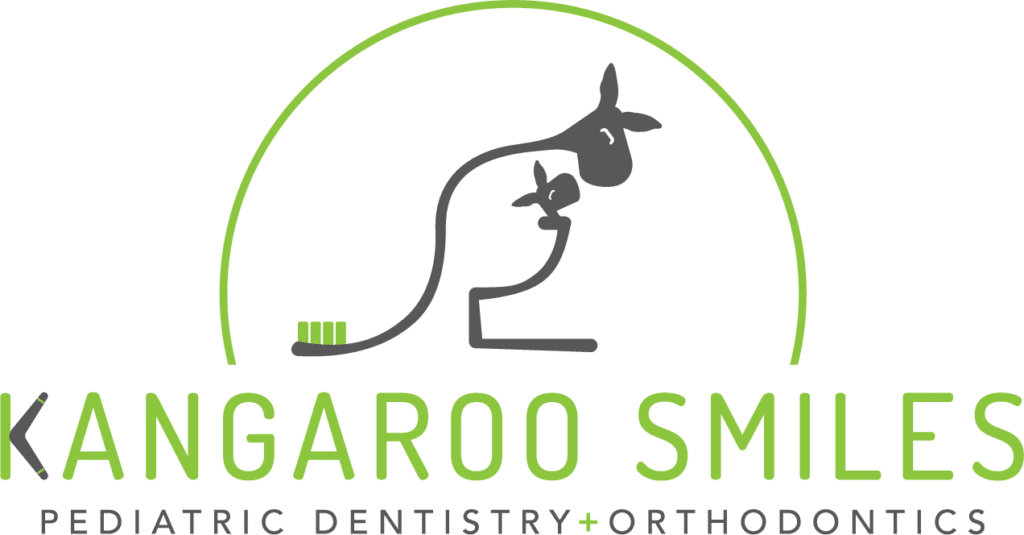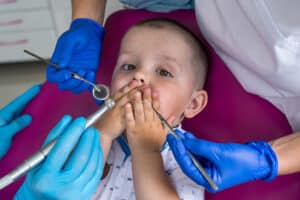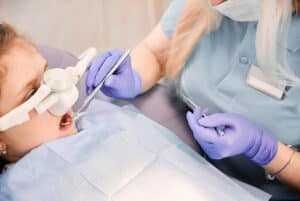For many parents, scheduling and attending a dental appointment for their child can be challenging. The anxiety and uncertainty both the child and parent might feel are very real. Despite this, we all know that a child’s dental health is crucial, not just for the aesthetics of a bright smile but for overall health and well-being. Thankfully, pediatric sedation dentistry offers a solution to address these concerns.
This method is designed specifically for younger patients, providing a safe and controlled way to ease potential discomfort or anxiety during dental procedures. With pediatric sedation, children can undergo essential treatments without the associated fear, ensuring both immediate comfort and fostering a positive perspective on dental care for the future.
What is Pediatric Sedation Dentistry?
Pediatric sedation dentistry refers to the use of medications to help children remain relaxed, calm, or even asleep during dental procedures. Unlike general anesthesia, which induces full unconsciousness, sedation dentistry aims to keep the child in a state of reduced awareness while still being responsive. The degree of sedation can vary, ranging from minimal, where the child is awake but relaxed, to deep, where the child might be on the edge of consciousness but can still be awakened.
Why It’s Sometimes Needed
Anxiety Management
Some children are naturally anxious or fearful about dental visits due to past experiences, stories they’ve heard, or even innate phobias. Sedation can help alleviate these fears, ensuring they get the necessary care without added trauma.
Prolonged Procedures
Some dental treatments, like extractions or complex cavity fillings, can be time-consuming. Keeping a child calm and still for extended periods can be challenging, and sedation helps facilitate these longer procedures.
Special Needs
Children with certain physical or cognitive conditions may find it hard to cooperate or stay still during a dental procedure. Sedation can offer a viable solution in such cases, ensuring that every child, regardless of their unique needs, receives optimal dental care.
Gag Reflex
A pronounced gag reflex can make certain dental treatments difficult to perform. Sedation can help suppress this reflex, making it easier for the dentist to work and more comfortable for the child.
Multiple Treatments in One Visit
If a child needs multiple procedures done, it might be more efficient and less traumatic to do them all in one sedated visit rather than spread them out over several appointments.
In essence, pediatric sedation dentistry acts as a bridge, ensuring children receive the necessary dental care in a manner that’s least stressful for them and the most effective for the practitioner. It’s a tool that prioritizes the child’s mental and emotional well-being alongside their dental health.
Types of Pediatric Sedation
Understanding the different types of pediatric sedation can help parents make informed decisions about their child’s dental care. The choice of sedation often depends on the child’s age, the nature of the dental procedure, and the child’s level of anxiety or potential discomfort.
Minimal Sedation (Nitrous Oxide or “Laughing Gas”)
Nitrous oxide is a colorless, slightly sweet-smelling gas that’s inhaled through a mask placed over the child’s nose, often combined with oxygen. Under its effect, the child remains awake but experiences a sense of relaxation. They may feel a bit tingly or light-headed, but these effects wear off quickly once the gas is turned off, making it a preferred option for minor procedures or for easing patient anxiety. Moreover, there’s usually no lingering effect, allowing children to resume normal activities shortly after their appointment.
Moderate Sedation
This can be administered orally in the form of a liquid or pill, or through an IV. Under moderate sedation, the child is more deeply relaxed. They are awake, might slur their words, and may not remember much of the procedure afterward. Unlike minimal sedation, the effects of moderate sedation last longer, and parents are typically advised to monitor their children closely afterward as they may feel groggy.
Deep Sedation
Given intravenously, deep sedation brings the child to the edge of consciousness. They can still be awakened but are mostly or entirely unaware of their surroundings. After undergoing deep sedation, the child might take longer to wake up and can feel drowsy for several hours.
General Anesthesia
This sedation type induces a deep sleep, rendering the child completely unconscious. They won’t experience any pain or have any memory of the procedure. Recovery from general anesthesia requires more time than other forms, and children might feel groggy or even nauseous once it wears off.
It’s always advisable for parents to have a detailed discussion with their dentist or anesthesiologist about the most appropriate sedation type for their child, considering both the dental procedure and the child’s overall well-being.
Safety and Precautions for Pediatric Sedation Dentistry
Ensuring the safety of the child is paramount during any medical or dental procedure. At Kangaroo Smiles, we prioritize this above all. Here’s how we approach sedation with utmost care and caution:
- Trained Professionals at Kangaroo Smiles: Our team consists of skilled professionals trained explicitly in pediatric sedation. Their experience ensures that the sedation is administered safely and effectively, tailored to each child’s unique needs.
- Pre-procedure Protocols: Before the procedure, parents and guardians are informed about the type of sedation, its effects, and any necessary preparations. This might include fasting guidelines or temporary medication adjustments.
- Monitoring During the Procedure: Throughout the procedure, the child’s vital signs, including heart rate, oxygen levels, and blood pressure, are closely monitored to ensure their well-being.
- Post-procedure Care and Instructions: Once the treatment is over, caregivers are provided with comprehensive post-sedation care instructions. This may include guidelines on diet, activity levels, and monitoring for any potential side effects.
Tips for Parents
Embarking on a sedation-assisted dental procedure for your child might be a new experience, and being prepared can make a world of difference. Here are some helpful pointers for parents:
- Preparing Your Child for Sedation: Talk to your child about the upcoming visit in a positive, calm manner. Avoid using words that might induce fear. Instead, frame the experience as something simple and straightforward.
- Post-procedure Care at Home: After the procedure, ensure your child rests and refrains from vigorous activities for a few hours. Keep an eye on their food and drink intake, sticking to soft foods and avoiding hot drinks if recommended.
- Addressing Any Concerns or Fears Your Child May Have: It’s natural for children to have questions or concerns. Engage in open conversations, reassuring them and addressing any misconceptions. Remember, a positive mindset can significantly influence their overall experience and outlook on dental care.
Are There Risks Associated with Pediatric Sedation Dentistry?
Absolutely, like any medical procedure, there are inherent risks associated with sedation and anesthesia. Yet, it’s worth noting that these risks are very rare, especially when administered by experienced professionals. At Kangaroo Smiles, our team of specialists prioritizes your child’s safety above all else and takes every precaution to mitigate these risks.
Potential risks associated with sedation and anesthesia can include:
- Allergic Reactions: Though uncommon, some children might have an allergic response to the sedatives.
- Nausea and Vomiting: This can be a post-procedure side effect, especially with deeper levels of sedation.
- Slow Heart Rate: Sedatives can sometimes impact heart rate, but this is closely monitored during the procedure.
- Low Blood Pressure: Another potential side effect, again, constantly monitored to ensure it remains within safe limits.
- Difficulty Breathing: In rare instances, sedatives can affect respiratory function.
Parents naturally prioritize the safety and well-being of their children, and questions or concerns about such procedures are to be expected. Our dedicated team of experienced pediatric dentists at Kangaroo Smiles welcomes any queries you might have. We’re committed to transparency, ensuring you’re informed and comfortable every step of the way.
Remember, at Kangaroo Smiles, our primary goal is to provide top-notch service while ensuring the utmost safety for your little one’s oral health needs.



